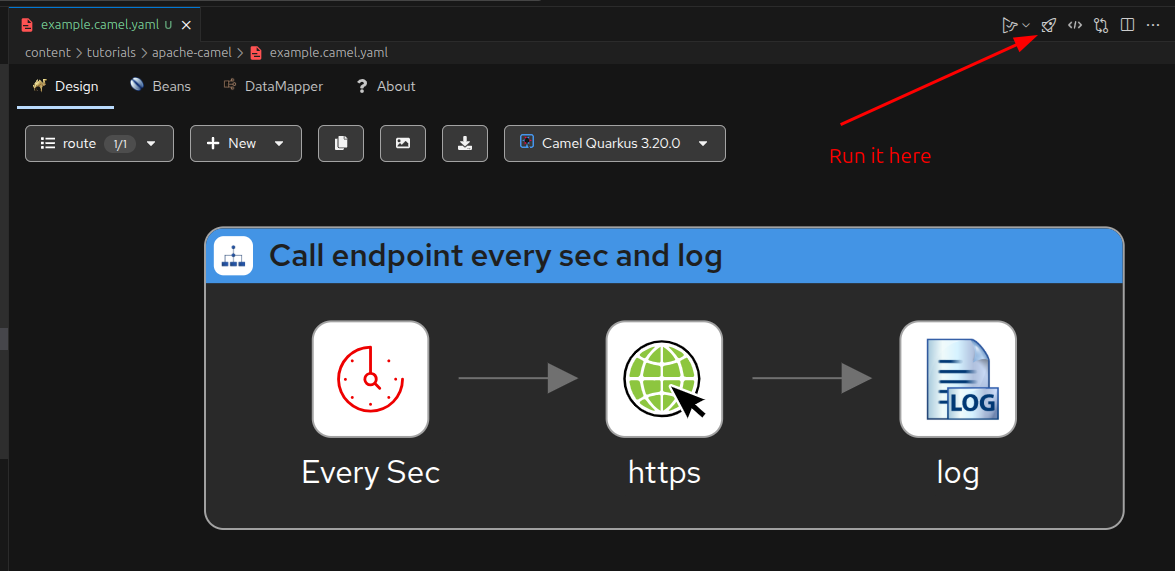Apache Camel is a really powerful integration framework that enables you to connect diverse systems using enterprise integration patterns. With its flexible routing and transformation capabilities, Camel simplifies complex workflows and data exchanges. Combined with Kaoto you can visually design and configure Camel routes with ease.
Prerequisites
- Java / Kotlin
- VS Code
- Gradle
- Quarkus (optional)
Install Extension Pack for Apache Camel by Red Hat
In order to create Camel Routes in VS Code the Extension Pack for Apache Camel by Red Hat is really helpful.
Create a new Camel Route
Open VS Code and create a new file with the extension .camel.yaml, for example example.camel.yaml.
You can then open the file using the Kaoto editor.

The source of the route depicted in the screenshot looks like this:
- route:
id: route
description: Call endpoint every sec and log
from:
id: timer
description: Every Sec
uri: timer
parameters:
delay: "1000"
period: "1000"
timerName: Tick-Every-Second
steps:
- to:
id: request
uri: https
parameters:
httpUri: https://jsonplaceholder.typicode.com/todos/1
- log:
id: log
message: ${body}
This route will trigger every second, call the specified HTTP endpoint, and log the response body.
Using camel yaml in Quarkus
In order to use the Camel YAML DSL in Quarkus, you need to add the following dependencies to your build.gradle.kts file:
dependencies {
implementation("org.apache.camel.quarkus:camel-quarkus-yaml")
// dependencies used by the route specified in the yaml file
implementation("org.apache.camel.quarkus:camel-quarkus-timer")
implementation("org.apache.camel.quarkus:camel-quarkus-http")
implementation("org.apache.camel.quarkus:camel-quarkus-log")
}
Once you have added the dependency, you can move your yaml files designed with Kaoto to the src/main/resources/camel directory.
The filename must be {your-custom-route-name}.camel.yaml, because the default config will look for files with this pattern.
